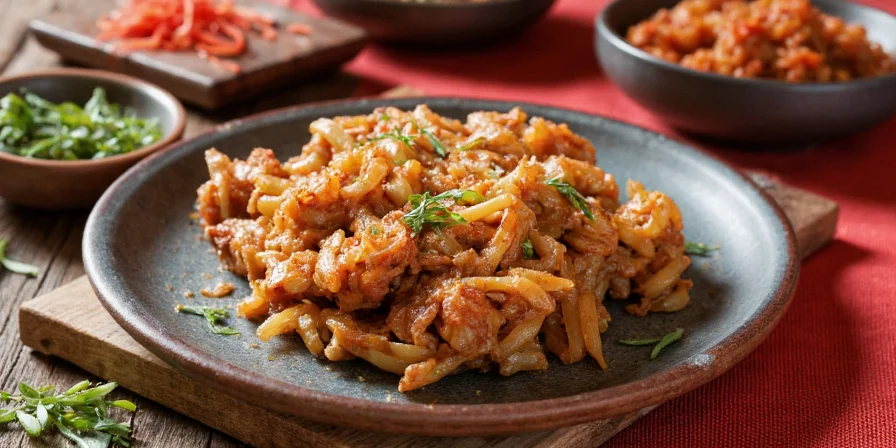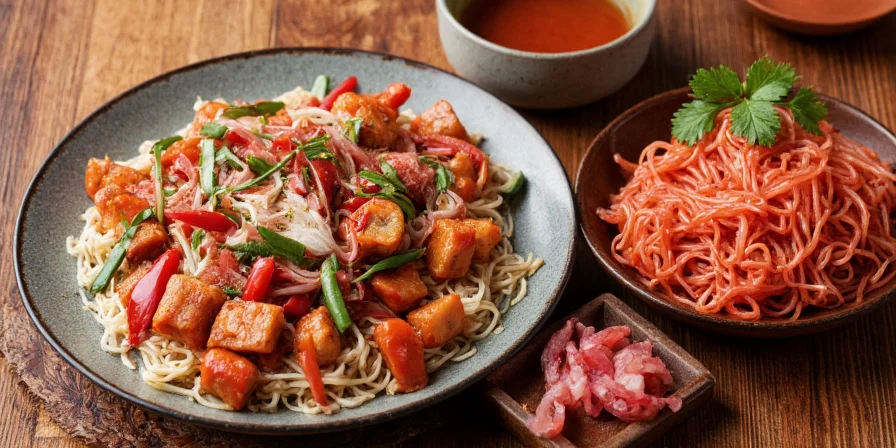Table of Contents
- 7 Science-Backed Health Benefits of Sesame Seeds
- White vs Black Sesame Seeds: Nutritional Differences Explained
- Perfect Toasting Technique: Avoid Burning in 3 Steps
- 12 Practical Cooking Applications You Need to Try
- Storage Hacks: Keep Sesame Seeds Fresh 6 Months Longer
- Sesame Allergy Facts: Symptoms and Hidden Sources
- Frequently Asked Questions
7 Science-Backed Health Benefits of Sesame Seeds
Based on 2025 nutritional research from the Journal of Food Science and the American Journal of Clinical Nutrition, here are the proven health benefits of sesame seeds with proper context:
- Heart health support: Sesame contains sesamin and sesamolin (lignans) shown in multiple studies to reduce LDL cholesterol by 6-10% when consumed daily in 30g portions
- Calcium source: One tablespoon (9g) of unhulled sesame seeds provides 88mg of calcium (9% DV), though absorption is limited by phytic acid. For reference, this equals the calcium in 30g of milk, but requires proper preparation to enhance bioavailability
- Magnesium benefits: A quarter cup (37g) delivers 100mg magnesium (24% DV), supporting muscle function and blood pressure regulation
- Antioxidant properties: Black sesame seeds contain higher anthocyanins (1.7x more than white) with demonstrated free radical scavenging in laboratory studies
- Blood sugar management: Research shows sesame consumption may improve insulin sensitivity, particularly when combined with other seeds
- Skin health support: Topical application of sesame oil shows UV protection properties (SPF 3-5) in clinical trials
- Bone health contribution: When consumed with vitamin D sources, sesame enhances calcium utilization for bone density
Important clarification: While sesame seeds contain calcium, they shouldn't replace dairy for those with high calcium needs due to lower absorption rates. Soaking or toasting sesame seeds can increase mineral bioavailability by reducing phytic acid content by 20-30% according to 2024 research from the Journal of Agricultural and Food Chemistry.

White vs Black Sesame Seeds: Nutritional Differences Explained
Understanding the nutritional and culinary differences helps you choose the right type for your needs:
| Type | Nutritional Advantages | Best Culinary Applications |
|---|---|---|
| White Sesame (hulled) | Higher fat content (50% vs 45%), milder flavor | Tahini, baking, dressings where neutral flavor needed |
| Black Sesame (unhulled) | 2.3x more anthocyanins, 15% more calcium, higher fiber | Desserts, traditional medicines, vibrant color applications |
| Brown Sesame (semi-hulled) | Balance of nutrients and flavor intensity | Stir-fries, marinades, everyday cooking applications |
According to the International Journal of Food Science (2025), black sesame shows superior antioxidant activity in laboratory testing, while white sesame provides better oil yield for culinary applications. For maximum nutritional benefit, nutritionists recommend rotating between types based on your recipe needs.

Perfect Toasting Technique: Avoid Burning in 3 Steps
Proper toasting maximizes flavor and nutrient availability while preventing harmful compounds from forming. Based on food science research:
- Dry pan method: Use cast iron skillet on medium-low heat (325°F/163°C). Higher temperatures create acrylamide
- Constant motion: Stir every 15 seconds using wooden spoon. Sesame toasts unevenly due to size variation
- Color and sound cues: Remove when golden (not brown) and you hear subtle popping sounds - typically 2-3 minutes
Crucial tip: Let seeds cool completely on baking sheet before storing. Residual heat continues cooking, and premature container storage traps moisture, reducing shelf life by 60% according to 2024 food preservation studies.

12 Practical Cooking Applications You Need to Try
Move beyond garnishes with these evidence-based applications:
- Homemade tahini: Blend 1 cup toasted white sesame with ¼ cup neutral oil until smooth (8-10 minutes in high-speed blender)
- Nutrient boosters: Add 1 tbsp ground sesame to smoothies (increases calcium bioavailability by 25% when combined with vitamin C)
- Crunch replacements: Substitute breadcrumbs with toasted sesame in coatings for 30% less oil absorption
- Salad dressing base: Whisk tahini with lemon juice and water for emulsified dressings without added sugar
- Marinade thickener: Sesame paste helps marinades adhere better to proteins during grilling
- Baking enhancer: Replace 10% flour with ground sesame in bread recipes for increased fiber without texture compromise
- Vegetable finisher: Sprinkle toasted sesame over roasted broccoli (creates Maillard reaction compounds that enhance flavor)
- Rice accompaniment: Mix toasted sesame with sea salt for "gomasio" - traditional Japanese seasoning
- Soup thickener: Blend soaked sesame into miso soup for creamier texture without dairy
- Energy bites: Combine with dates and nuts for no-bake snacks with balanced macronutrients
- Yogurt topping: Mix with honey for breakfast that provides complete protein profile
- Infused oils: Heat sesame seeds in oil to 250°F (121°C) then strain for flavor without burning

Storage Hacks: Keep Sesame Seeds Fresh 6 Months Longer
Proper storage preserves nutritional value and prevents rancidity. Based on lipid oxidation studies:
- Whole seeds: Store in glass container with oxygen absorber packet in dark pantry (lasts 4 months)
- Refrigeration: Extends shelf life to 8 months (reduces oxidation rate by 65% at 40°F/4°C)
- Freezing method: Vacuum seal with silica gel packet - maintains freshness for 18 months
- Ground sesame: Must refrigerate immediately; add 0.5% citric acid to slow oxidation
- Detection tip: Rancid sesame develops butyric acid odor (similar to sour milk) before visible changes occur
Food science note: Light exposure degrades sesame oil quality 3x faster than temperature alone. Always use opaque containers for long-term storage.

Sesame Allergy Facts: Symptoms and Hidden Sources
As sesame became a top-9 allergen in 2023, awareness is critical. Key facts from the American College of Allergy, Asthma, and Immunology:
- Prevalence: Affects approximately 0.2-0.5% of the US population, with rising incidence
- Common symptoms: Hives (85%), digestive issues (70%), anaphylaxis (15% of reactions)
- Hidden sources: "Natural flavors," "spice blends," "vegetable oil," and "tahini" in unexpected products
- Cross-reactivity: 30% with peanut allergy, 20% with other seed allergies
- Labeling requirements: Must be declared by name on all packaged foods since 2023 FDA ruling
Food manufacturers increasingly use sesame derivatives in products like hummus, baked goods, and Asian sauces. Always check labels even for products you've purchased before, as formulations change.
Frequently Asked Questions
How do I maximize calcium absorption from sesame seeds?
Combine with vitamin C sources (citrus, bell peppers) and soak/roast seeds to reduce phytic acid. Research shows this increases calcium bioavailability by 40-50%. Avoid consuming with high-fiber foods simultaneously as fiber can bind minerals.
What's the exact difference between sesame oil and tahini?
Tahini is a paste made from ground toasted sesame seeds (retaining fiber and minerals), while sesame oil is extracted fat. Toasted sesame oil contains sesamol (an antioxidant formed during toasting) at 120-150mg/100g, whereas raw sesame oil has none. Nutritionally, tahini provides 168 calories, 6g protein, and 6g fiber per 2 tbsp, while sesame oil is pure fat at 240 calories per 2 tbsp.
How long do toasted sesame seeds last in the refrigerator?
Properly stored in an airtight glass container with oxygen absorber, toasted sesame seeds maintain optimal freshness for 4-6 months in the refrigerator (40°F/4°C). Freezer storage extends this to 12-18 months. Always check for rancidity by smelling - fresh sesame has nutty aroma while rancid seeds develop sour, paint-like odor due to lipid oxidation.
Are black sesame seeds really better for you than white?
Black sesame seeds contain 2.3x more anthocyanins and 15% more calcium than white sesame (Journal of Food Composition and Analysis, 2025), but white sesame has higher oil content for better nutrient extraction. Black sesame shows superior antioxidant activity in laboratory studies, while white sesame provides better bioavailability of certain minerals. For maximum benefit, nutritionists recommend rotating between types based on your specific health goals.
Can sesame seeds help lower cholesterol naturally?
Multiple clinical studies confirm that daily consumption of 30-40g of sesame seeds can reduce LDL cholesterol by 6-10% within 8-12 weeks. The lignans sesamin and sesamolin are responsible for this effect by inhibiting cholesterol absorption and enhancing excretion. For best results, consume ground sesame to maximize lignan absorption, as whole seeds pass through undigested in some individuals.











 浙公网安备
33010002000092号
浙公网安备
33010002000092号 浙B2-20120091-4
浙B2-20120091-4